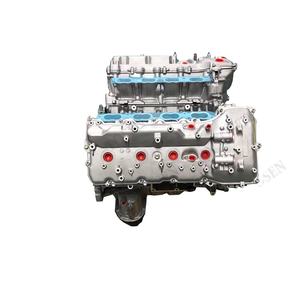Opel Corsa Engine: Common Issues and Exactly How to Fix Them
Opel Corsa Engine: Common Issues and Exactly How to Fix Them
Blog Article
Exploring the Inner Operation of a Compact Automobile's Engine System
As vehicle drivers, we often take for given the complex procedures that occur within the confines of our lorry's engine system. In this exploration of a compact lorry's engine system, we will untangle the internal operations of this mechanical harmony, dropping light on the secrets that drive us forward on our everyday trips.
Combustion Refine Summary
The burning procedure in a small car's engine system is a vital device that successfully transforms fuel right into energy to power the car. This process happens within the burning chamber of the engine, where gas and air mix, stir up, and produce controlled explosions. The combustion process includes four main stages: consumption, power, compression, and exhaust.
Throughout the intake stage, the piston relocates downward, attracting a mix of air and gas into the combustion chamber. The following phase, compression, includes the piston moving up, pressing the air-fuel combination to raise its potency. Subsequently, in the power phase, the ignition system ignites the compressed combination, resulting in a fast growth of gases that requires the piston back down. This descending movement creates the power needed to drive the car. Ultimately, in the exhaust phase, the burned gases are expelled from the burning chamber with the exhaust shutoff, preparing the chamber for the next cycle. This cyclic combustion process is fundamental to the operation of a portable lorry's engine system, ensuring effective power conversion for propulsion.
Piston and Cyndrical Tube Communication

The piston's exact fit within the cyndrical tube is crucial for keeping optimum compression and stopping power loss during burning. Tight clearances between the piston and cylinder wall surfaces ensure efficient securing, permitting the piston to relocate efficiently without allowing gases to leak past. Correct lubrication is also crucial to lower rubbing and wear in between these parts, enhancing durability and efficiency.
Moreover, the style and products used in producing the piston and cylinder influence engine efficiency and resilience. Modern engines often utilize light-weight yet resilient products like light weight aluminum alloys for pistons and cylinder liners to lower inertia and improve thermal effectiveness. Generally, the unified communication between the piston and cyndrical tube is fundamental to the engine's functionality and general efficiency.
Gas Shot System Capability
Fuel injection systems in look at more info small car engines play an essential function in precisely delivering fuel to the burning chamber for controlled and reliable ignition. The fuel shot system operates by injecting fuel right into the combustion chamber at the ideal moment during the engine's operation (opel corsa engine). This specific timing makes certain that the gas blends evenly with the air for correct burning, bring about boosted fuel effectiveness and decreased discharges
There are mostly two sorts of fuel injection read here systems made use of in portable car engines: port fuel shot (PFI) and straight gas shot (DFI) PFI systems infuse gas into the intake port before the intake valve, while DFI systems inject fuel straight into the combustion chamber. Both systems have their advantages, with DFI using better fuel atomization and PFI supplying a more affordable solution.
Understanding Engine Air Conditioning Mechanisms
Efficient operation of a small automobile's engine counts heavily on the performance of its cooling systems. The air conditioning system in a compact automobile generally consists of numerous parts functioning with each other to manage the engine temperature level. Comprehending these engine cooling systems is vital for keeping the performance and long life of a compact automobile's engine system.

Exhaust System Parts Explained
The ideal functioning of a small automobile's engine air conditioning devices relies on a corresponding system called the exhaust system, which consists of various essential components for guaranteeing reliable emissions and engine performance. The exhaust system includes components such as the exhaust manifold, catalytic converter, muffler, and tailpipe. The exhaust manifold accumulates exhaust gases from the engine's cylinders and paths them to the catalytic converter. The catalytic converter then converts hazardous contaminants in the exhaust into much less unsafe emissions before launching them via the muffler and tailpipe.
One crucial part of the exhaust system is the oxygen sensing unit, which monitors the oxygen levels in the exhaust gases to aid regulate gas consumption and make certain optimum engine efficiency. opel corsa engine. Additionally, the resonator may be present in some exhaust systems to lower noise degrees. In general, the exhaust system plays a crucial role in maintaining engine performance, reducing harmful emissions, and making sure a quieter driving experience for small vehicle owners

Conclusion
Finally, the portable car's engine system is a complex combination of parts that collaborate to help with the combustion process, convert gas right into power, and get rid of waste gases. Understanding the internal workings of the engine system, including the piston and cylinder interaction, gas injection system, engine air conditioning devices, and exhaust system components, is vital for keeping ideal efficiency and efficiency of the vehicle.
The burning procedure in a portable automobile's engine system is a vital mechanism that efficiently converts gas into energy to power the car.Gas shot systems in compact car engines play a crucial function in precisely providing gas to the burning chamber for effective and regulated ignition.There are mostly 2 types of gas injection systems utilized visit here in compact automobile engines: port fuel injection (PFI) and direct fuel injection (DFI) Recognizing these engine air conditioning systems is important for keeping the performance and durability of a compact vehicle's engine system.
The optimal functioning of a small vehicle's engine cooling mechanisms depends on a corresponding system recognized as the exhaust system, which makes up different important elements for making sure efficient emissions and engine efficiency.
Report this page